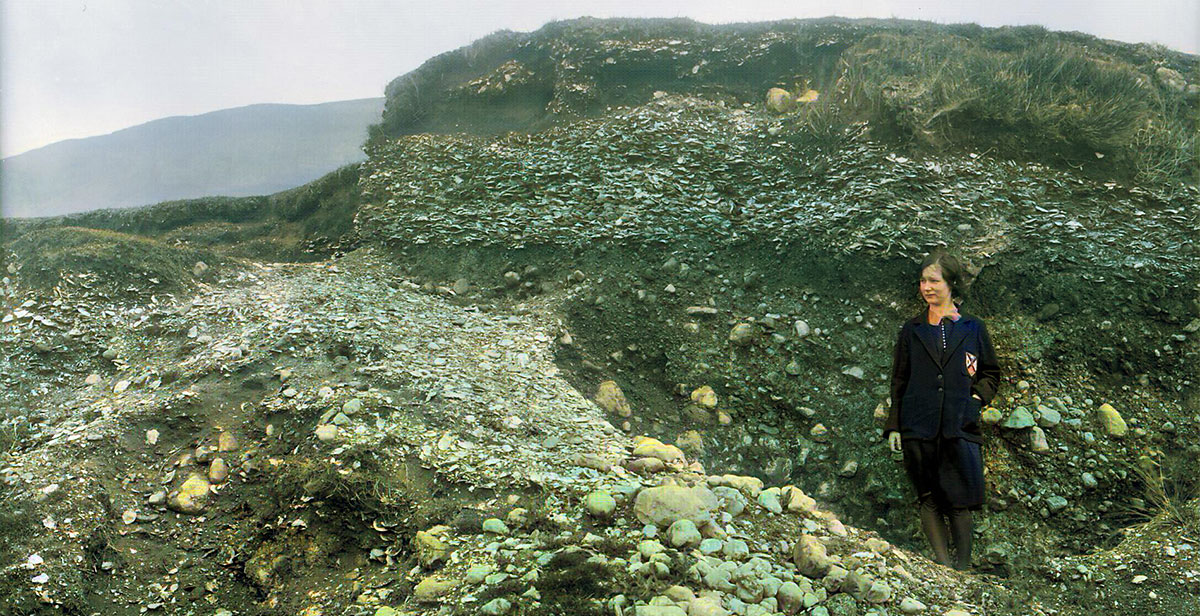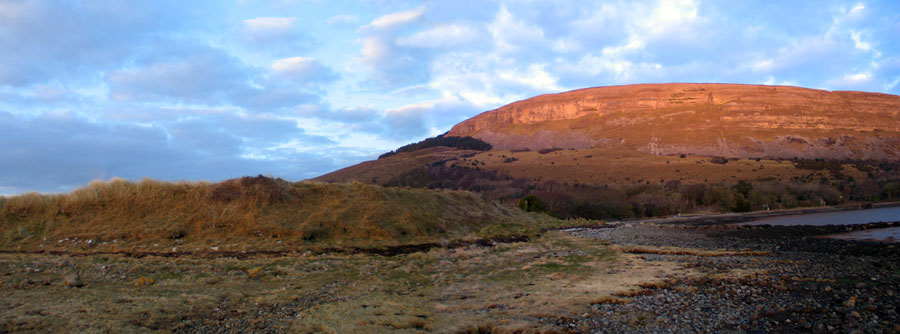Culleenamore shell middens
Cullenamore is a beautiful stretch of beach along the west side of, and overlooked by Knocknarea Mountain at the tip of the Cuil Iórra peninsula, facing the Atlantic ocean.
This whole region is abundant with archaeological sites from the neolithic onwards, and coastal middens—large piles of marine shells—which were thought to date back to early neolithic or even earlier to the mesolithic by Göran Burenhult, the chief excavator of monuments at the Carrowmore megalithic complex. Burenhult also excavated at Culleenamore and the court-tomb at Primrosegrange close by.
However, Burenhult found nothing neolithic in Culleenamore and modern archaeological research now dates these massive mounds of shells from the Bronze age right through to the middle ages in Ireland. Mesolithic middens would have long vanished due to erosion along the stormy west coast
The famous ribbon midden at Culleenamore is a great mound of oyster shells with some limpets, 200 meters long and about six meters deep. The middens were long thought to have been left by the colonizing farmers who built great abundance of ancient monuments on the Knocknarea Peninsula. However, Ancient DNA results have shown that the passage-grave builders rarely included fish in their diet. The Culleenamore midden was dated from charcoal and firepits to about a century before the arrival of the Normans, about 1050 AD. A mound of oyster shells in the Glen of Knocknarea, which appears to be the refuse heap from a ringfort would appear to be from about the same time.
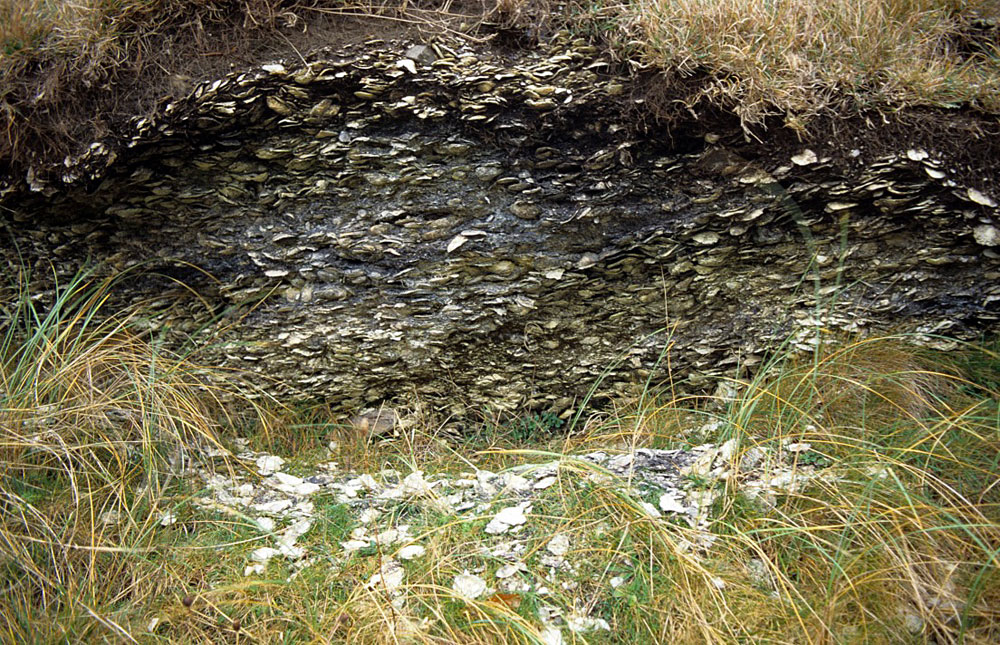
Other middens
There are many more middens recorded along this stretch of coast, which must always have been a suitable habitat for oysters. Several of the middens reported in the 1970's and 1980's have disappeared due to coastal erosion. Burenhult excavated a midden to the south-east of the Culleenamore mound. He recovered Bronze age dates from slightly after 2,000 BC.
People have surely been visiting the Cuil Iórra peninsula since the mesolithic, but the closest mesolithic sites and finds are in cave burials in County Leitrim and at around Lough Gara in north Roscommon. The causewayed enclosure at Magheraboy is currently the oldest dated example in Ireland or England at about 4,150 BC, and the monument may well be where interactions took place between the mesolithic Irish and the incoming Breton farmers.
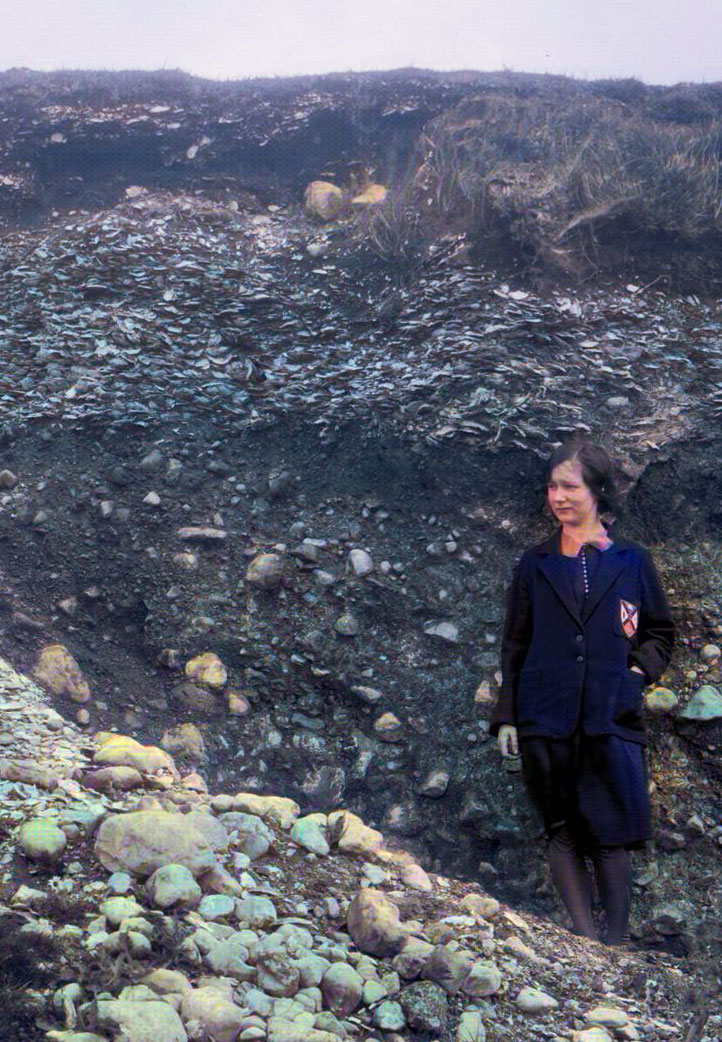
The main settlement of the Carrowmore people has yet to be discovered. A large neolithic village of 160 hut sites is known on Doonaveeragh mountain at Carrowkeel twenty-six kilometers to the southeast. The Cuil Iórra settlement may have been on the eastern side of Knocknarea, where a plateau or hum joins the mountain at 190 meters above sea level. Unfortunately a fairly recent plantation of pine trees has obliterated any remains, but many pieces of worked chert and pieces of quartz have been found there.
Twenty-seven hut sites have been discovered on the south side of Knocknarea, above Culleenamore and the Glen, where a large medieval midden can be found. There is a trackway that leads up the mountain from the Glen and along the top of the western cliff overlooking Culleenamore, coming out near the neolithic huts. There are also neolithic banks running around the summit of the mountain. The path continues north along the top of the cliff to a small series of caves which were probably very sacred and used for much the same function as the chambered cairns. The chambers within the cairns are really artificial caves.
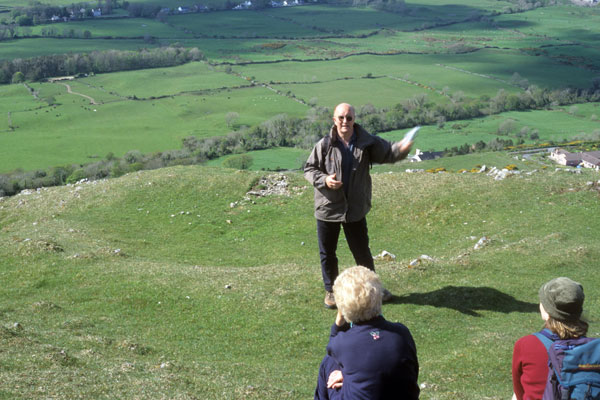
There are fine views across Ballisodare Bay to the cairns on Doomore and Croghaun mountains from the middens. A large colony of seals lives on the sandbanks south and west of the shoreline. In recent years a sperm whale washed up on the shore. Up untill the start of the 20th century, when the industry went into decline, Culleenamore oysters were exported all over the world.

